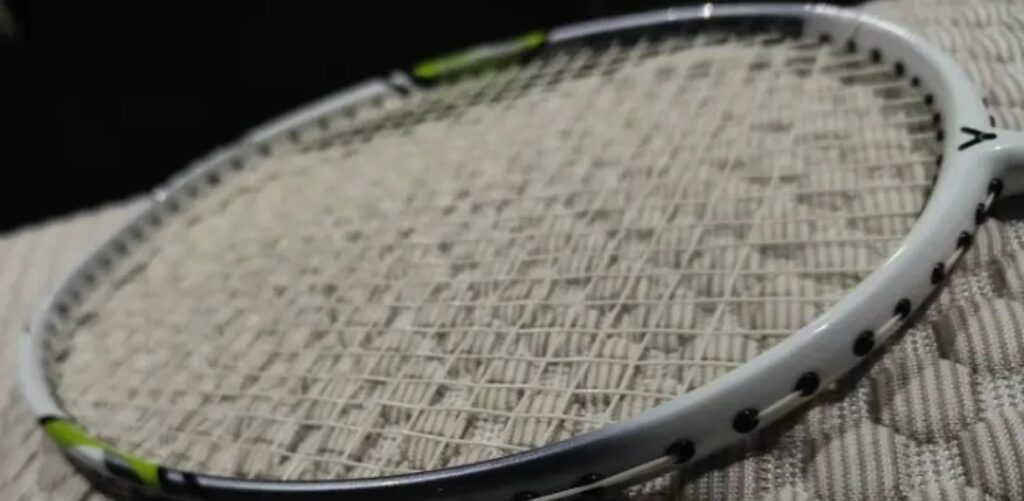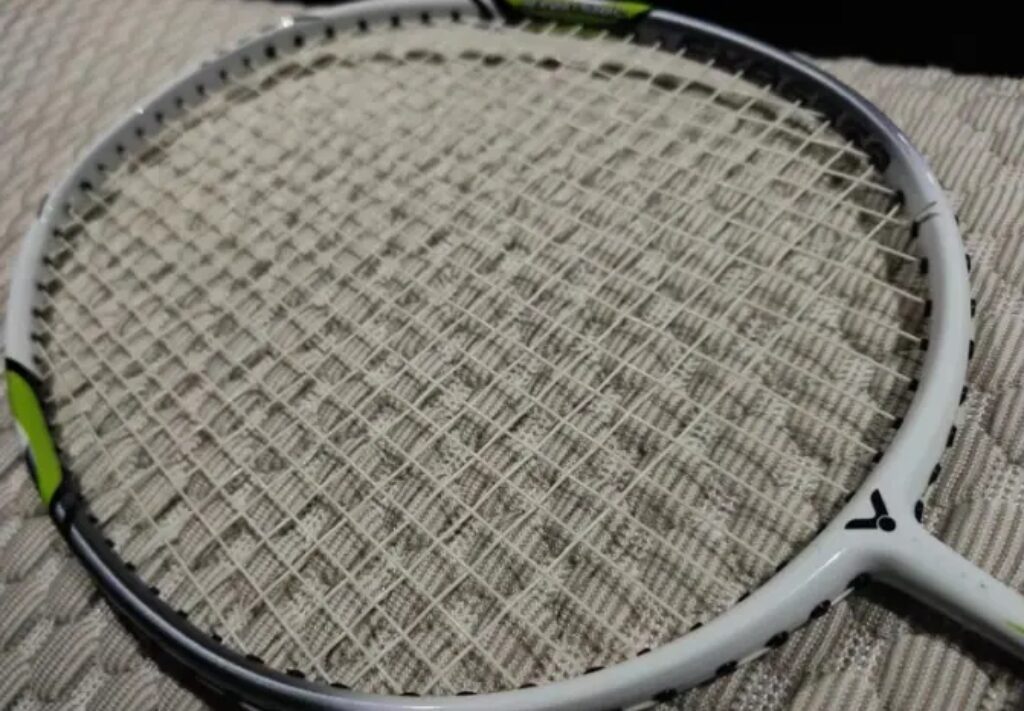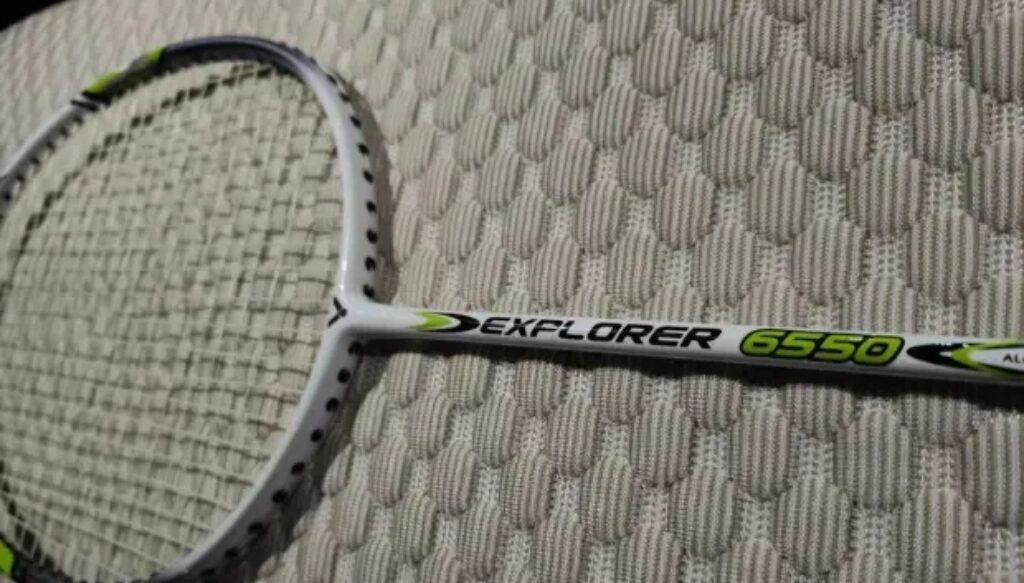There are so many rackets that I couldn’t even finish testing all the stock I have if I reviewed one daily, especially the low-end ones. Playing with them feels more like a casual task. In moments of uncertainty, I gathered a bunch of old and worn-out rackets to try, some purchased with my own money, and others borrowed from close friends. It was an opportunity to break free from relying on equipment performance. The rackets came with poor strings, so I decided to try them out as-is, just to see what it would feel like to play again.
When I collect these old rackets, I often think back to my very first one from the Victor Explorer series, and I wonder if I can recall some details from other models.

Specifications: 3UG5, without the cap, total weight in use 90.41g, balance point 295mm, shaft length 215mm, low stiffness, oval aerodynamic frame, 72-hole string bed, 9–3 o’clock string grooves, warranty of 22-24 lbs, strung with 22 lbs training strings.
If the 6350 model can still attract buyers with its striking colors, then the white version of the 6550, among its many color variants, really feels plain and uninspired. It embodies a sense of “no technology, no decoration, no gimmicks.” Clearly, even at the time, it was positioned as a training racket, and I imagine its feel could be summed up as “good enough to use.”
This racket’s swing weight is slightly lower than that of the 6350, offering a more balanced feel among low-end rackets. In such low-tier products, there’s unlikely to be a significant difference in materials, with the main distinctions being balance point or stiffness adjustments. When using both rackets together, besides the balance point difference, there’s not much more to distinguish between them.

What surprised me was that this slight adjustment made the 6550 feel noticeably inferior to the 6350. If the 6350 could still rely on its relatively higher swing weight to provide extra power in shots, the lower balance point of the 6550 eliminated the ease of hitting high-quality long shots. The racket’s elasticity is already poor, and with the diminished sense of borrowed power, hitting clean clears became difficult. While this might cater to some beginners who believe “lighter is better,” it doesn’t help maintain shot quality.
As expected, the racket performs poorly in offense and drives. First, the loss of power is very evident—despite the strings being terrible, the racket as a whole felt powerless during downward strokes, unable to draw out any elasticity, even showing a disjointed feel during short, sharp hits. Second, it was hard to maintain my own rhythm. Even though the frame’s wind resistance is low and the racket is relatively flexible, the sluggish shot response made me feel like I was using a fishing net in rallies. Whenever I tried to push or power through a drive, the racket face seemed to cradle the shuttle, refusing to let it go.

Later, I tried changing the context, using the racket against players with a noticeable skill gap. Surprisingly, I began to appreciate its low balance point, which made generating power easier, especially in handling backhand shots and blocking smashes at the net. However, even though the slower pace gave me more time to hit each shot, the racket still struggled to return long shots effectively. Although I adapted to it somewhat over time, the adjustment period for a beginner’s racket was a bit too long, and I had to rely on string changes to compensate for its performance shortcomings.
In the end, though it didn’t cost me much, finishing the trial with this racket left me somewhat bitter. I ended up playing conservatively, merely blocking and tapping near the net, feeling like I was in “retirement mode.”
I really don’t have the confidence to use it in doubles and drag my partner down. A few times, I brought it onto the court, played a couple of rallies, and then quickly swapped it out.


Leave a Reply